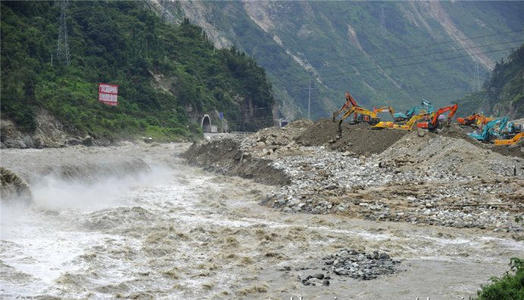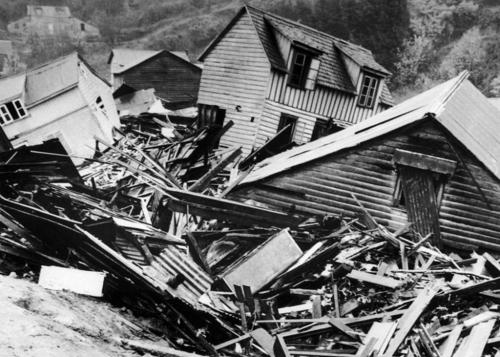Emergency and Disaster Management
Name
Institution
Emergency and Disaster Management
Disaster Management代写 Algeria is a northern African country and one of the countries where floods and earthquakes are prone.
Algeria Disaster Management Assessment
Algeria is a northern African country and one of the countries where floods and earthquakes are prone. The government has learned about the various disasters that are likely to occur, and the country is learning to be disaster resilience (Parsons at al., 2016). The valuable lessons are learned from disaster response, and recovery experiences have created a level of preparedness like never before. To achieve this, the county needs political interests, engagements, and commitments from the government and leaders. Therefore, Algeria has for years forged innovative mechanisms through which other sectors and agencies are integrated for a sustainable development agenda that is ready and responsive to emergencies.
Likely Disaster in Algeria Disaster Management代写
Algeria is prone to natural disasters like earthquakes and floods besides having human-made one like road accidents. The country also faces an economic and social disaster such as poverty. The most impactful of all and that need national preparedness are natural disasters. In 2003, the country was hit by an earthquake measuring 6.8 Richter scale that leads to the loss of more than 3000 people, injured over 10,000, and caused over 18,000 homelessness (“PreventionWeb,” 2014).

Back in 2002, a heavy downpour left dozens of people died when 18 provinces were affected by the flood. The year before, there was mud and debris slides, which resulted from violent storms that dislodged and buried homes and left more than 300 people dead and more than 1000 injured and homeless. These disasters occurred after a decade when a major earthquake killed more than 5000 people in 1980.
Preparedness and Infrastructures Disaster Management代写
Over the years, Algeria has learned that prevention is better than a response. Therefore, the country established Algeria Red Crescent Society (ARCS), a project which trains disaster response teams to respond and intervene during emergencies. The principal objective of the program is to has logistical preparedness in all 48 governorate states (Ullberg & Warner, 2016). In the issue of disaster control, the team is trained to management and coordination of reduction approaches. It includes assessment of vulnerabilities and pooling of local resources in disaster-prone areas including Boumerdes, Kikda, Oran, Ouargla, and Annaba. The moves are coupled with the installation of first aid centers around all the 48 governorates.
Moreover, the government is committed to creating public awareness on disaster response and reduction. Disaster Management代写
People are vulnerable to disaster because they are not aware of how to respond to get out of looming harm and to protect themselves. The country also adopted a Law on Prevention of Major Risks and Disaster Management which aim to prevent the occurrence of disaster by establishing various regulatory frameworks that will see people responsible for environmental uses and preparedness. It also created the National Scheme for Land Use and Planning which provide for the land management and purpose as well as urban planning. The laws and regulations are in the spirit of The United Nations Office for Disaster Risk Reduction (2013).
Also, the plans and regulations align with the Sendai Framework that is adopted in the international community as the replacement of the Hyogo Framework (Bernd, 2015). The frameworks aim to guide on the disaster risk reduction since 2005.
However, Algeria acknowledges that this infrastructural preparedness and regulations will be added costs to the country’s economy in short-run. The government noted that, compared to disaster reduction, disaster response cost less in short-term. In long-term it will still cost more to reduce disaster but less than disaster response. Therefore, the government seeks to partner with international communities and donor countries to fund its efforts in disaster management.
References Disaster Management代写

Bernd, L. (2015). Algeria embraces Sendai Framework. Retrieved from https://www.unisdr.org/archive/44644
The United Nations Office for Disaster Risk Reduction. (2013). Making Algeria ResilientAchieving Disaster Risk Reduction in the Arab States:Good Practice Country Brief (pp. 1-12). The United Nations. Retrieved from https://www.undp.org/content/dam/algeria/docs/EnvironnementetEnergie/UNDP-DZ-Best%20Practice%20DRR%20Algeria.pdf
PreventionWeb. (2014). Basic Country Statistics and Indicators 2014. Retrieved from https://www.preventionweb.net/countries/dza/data/
Parsons, M., Glavac, S., Hastings, P., Marshall, G., McGregor, J., McNeill, J., … & Stayner, R. (2016). Top-down assessment of disaster resilience: A conceptual framework using coping and adaptive capacities. International Journal of Disaster Risk Reduction, 19, 1-11.
Ullberg, S. B., & Warner, J. (2016). The relevance of soft infrastructure in disaster management and risk reduction. UN Chronicle, 53(3), 23-26.
更多其他:艾莎代写 Review代写 Essay代写 文学论文代写 Report代写 Admission 研究论文代写 Case study代写 Proposal代写 Academic代写




您必须登录才能发表评论。